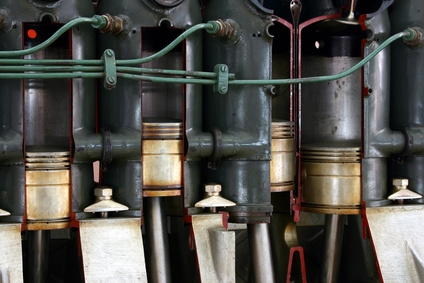
An automobile engine represents a complex interaction of mechanical parts with thermal and chemical reactions that produces the energy necessary to propel a vehicle forward. The most basic process within an engine is the combustion cycle; it is a precise interaction between the camshaft and crankshaft that determines when the combustion cycle takes place in each cylinder. The crank and camshafts work in tandem through a connection created by the timing chain.
A timing chain is the link between the crankshaft and the camshaft that transmits the rotation of the crankshaft to the camshaft, which then causes the opening and closing of the intake and exhaust valves within an engine.
The timing chain transfers energy from the crankshaft to the camshaft by wrapping around gears mounted to the ends of the two shafts, which the chain uses to grip the shafts. The sizes of the gears create a reduction of rotational speed that causes the camshaft to rotate at exactly half the speed of the crankshaft.
The timing chain controls when the intake and exhaust valves open in relation to the position of the crankshaft by turning the camshaft at a precise rate. When the valves are opened and closed is determined by the position of the camshaft in relation to the position of the crankshaft. The timing chain maintains this synchronization between the crank and camshaft as it transmits the rotation of the crankshaft to the camshaft.
Some timing chains are mounted in a fixed position on the crank and camshaft gears and cannot be adjusted. As these chains wear, slack in the chain increases and alters the valve timing of the engine. These chains must be replaced when excessive slack appears. Other timing chain assemblies use tensioners that maintain a consistent amount of tension within the timing chain as the chain wears, reducing the effect that slack has on the valve timing of the engine.
Some engines use belts instead of chains to control the operation of the camshaft. Instead of a metal chain, a rubber belt reinforced with fiberglass or other materials is mounted on ribbed gears at the ends of the crank and camshafts. Timing belts operate in the same manner as timing chains and perform the same functions.